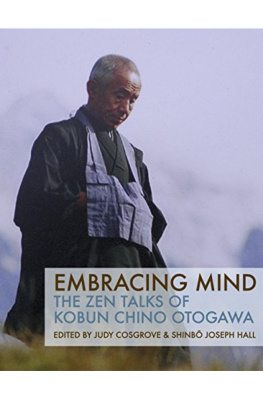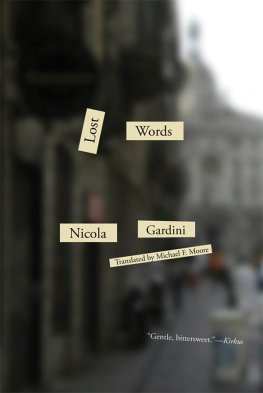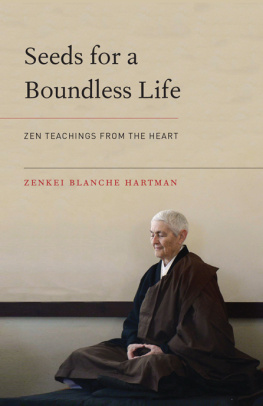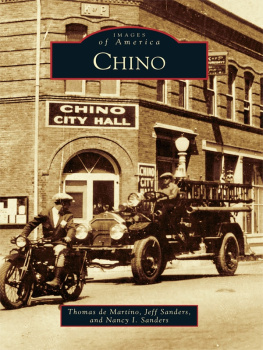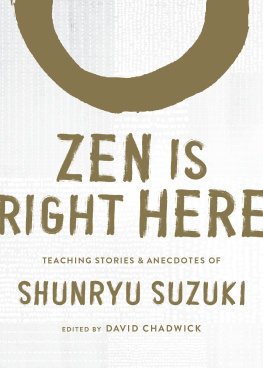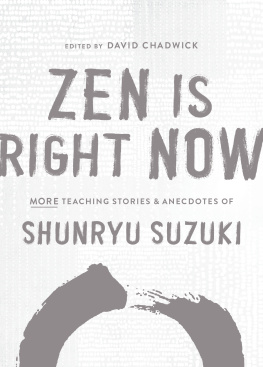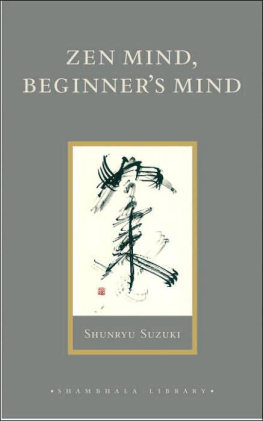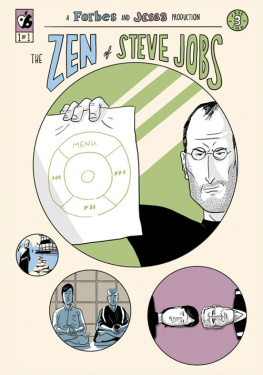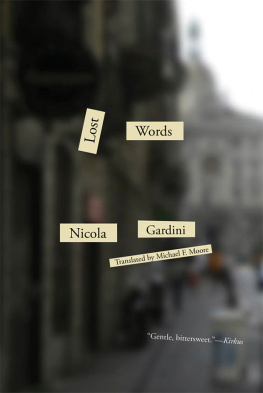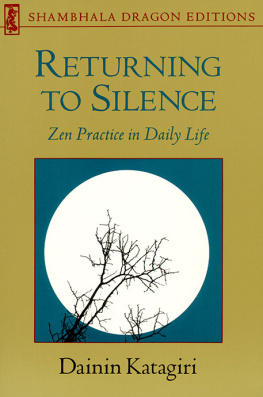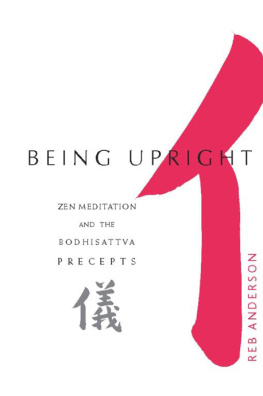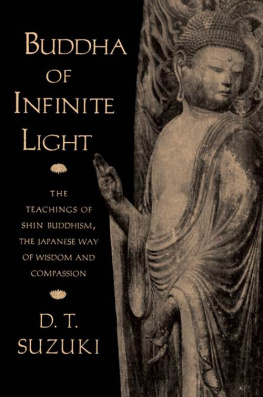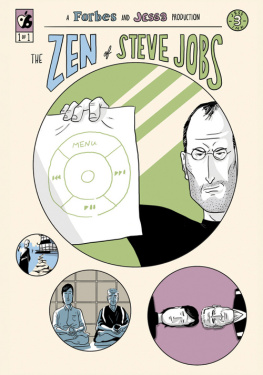Copyright
Printed in the United States of America
First Printing, December 23rd,2016
ISBN 978-0-9985374-1-2
Jikoji Zen Center
12100 Skyline Blvd
Los Gatos, CA 95033
www.jikoji.org
2015 Jikoji Zen Center
All rights reserved. This book or any portion thereof may not be reproduced or used in any manner whatsoever without the express written permission of the publisher except for the use of brief quotations in a book review.
Photos
- Kobun Chino Otogawa
- Sojun Mel Weitsman, Ananda Dalenberg, Shunryu Suzuki, Kobun Chino Otogawa, Dainin Katagiri - San Francisco Zen Center
- Kobun Chino Otogawa - Colorado
- Kobun Chino Otogawa - Puregg (House of Silence), Austria
- Kobun and Son, Alyosha - Felsentor, Switzerland
- Kobun Chino Otogawa
- Oryoki bowls at Jikoji
- Kobun Chino Otogawa
- Kobun Chino Otogawa - Hokoji Zen Center, Taos NM
- Kobun Chino Otogawa
- Long Ridge near Jikoji Zen Center
- Kobun Chino Otogawa- Kudo Shabata Dojo, Boulder CO
- Kobun Chino Otogawa - Jikoji Zen Center
- Kobun Chino Otogawa
- Kobun Chino Otogawa, Shunryu Suzuki - Tassajara Zen Mountain Center, Carmel Valley, CA
- Kobun Chino Otogawa - Naropa University, Boulder, CA
- Kobun Chino Otogawa - Purreg, Austria
- Kobun Chino Otogawa Shambala Mountain Center, CO
- Dainin Katagiri, Maezumi, Shunryu Suzuki, Bill Kwong,Kobun Chino Otogawa, Richard Baker, others,
- Kobun Chino Otogawa, Katrine Otogawa, Nancy Newhall, Ashleigh Hannon - Halifax, Nova Scotia
- Kobun and Son, Alyosha - Felsentor, Switzerland
- Kobun Chino Otogawa
- Kobun Chino Otogawa
- Shoes - Jikoji Zen Center
- Kobun Chino Otogawa Memorial Stone - Jikoji Zen Center
- Deer - Jikoji Zen Center
- Kobun Chino Otogawa
- Kobun Chino Otogawa - Haiku Zendo.
Calligraphy
by Gerow Reece
Forward
Angie Boissevain
As a weekend guest at Tassajara Zen Mt. Center in its very first years, a monk told me about Haiku Zendo in Los Altos, not far from where I lived, and about Kobun Chino, the Zen Master there, and recommended I look him up. A young mother of three boys, painfully shy, but already inspired by the zazen practice I learned at Tassajara, I timidly found my way to little Haiku Zendo, on a suburban street in Los Altos. Once there, after the first long sitting, I glanced up, met Kobuns eyes, and was scared and awed to realize this practice was what I had been searching for for as long as I could remember.
After a few months, I began attending his Monday morning teachings, and there began to help Mary Kate Spencer write down Kobuns slow slow speech as he discussed basic Zen sutras. This writing practice developed into typing all the Monday morning material, and then into also transcribing the taped talks Kobun gave during our five sesshins a year, becoming a many-years-long labor of love for the Dharma, and for my teacher.
When I met him he was in his early 30s and had only been in the United States a few years. A small man, he sat before us in meetings speaking extremely softly and slowly, his English awkward and original, as he gestured with gentle hands. The Dharma he expressed seemed to emerge in slow spirals, and we learned to listen with our hearts and bellies, and had to abandon linear thinking as he spoke. Some complained because he didnt make sense; some relished this new way to speak, pointing to what cant be said.
Kobun was a poet, a brilliant calligrapher, and a landscape painter. But with demands for his teaching, he had little time for art. Not only had he accepted Suzuki Roshis assignment of Haiku Zendo, after helping him set up Tassajara, but Roshi, on his deathbed, asked Kobun to help San Francisco Zen Center Sangha complete their training after he passed away. Kobun also taught classes at Stanford University, and, as well as Wednesday nights and Thursday morning meetings with students, sat five sesshins with us every year.
The forms he taught were the basic ones established by Dogen Zenji 900 years ago. Eating rituals, service, sesshin schedules were strict and traditional. Other more complex ceremonies were simplified. A Full Moon Ceremony was held around a bonfire, Ceremony in a living room. Ordinations were sometimes very precisely traditional, and sometimes, depending on the student, hardly noticeable.
In those suburban years, he encouraged families to form among us, and formed one himself with his American wife, Harriet, and, in a few years, two kids, Taido and Yoshiko. Living around the corner from Haiku Zendo, he easily could walk there, and sesshins were only 3 miles away on a ranch in the country, so he could slip from sesshin to go home and tend to his family, as many of his students could also do as well. Retreats were always open to such comings and goings to accommodate needs of the sangha.
After he moved to New Mexico to found Hokoji temple in Taos in the 80s, we seldom saw him, but the California sangha gave full attention to developing two permanent practice places, Kannon-do temple in Mountain View and Jikoji, a retreat center in the Santa Cruz mountains, to which he came and went as he widened his life and practice to serve many others, in New Mexico, and in Europe, where he founded new temples with Vanja Palmers.
He died in 2002 in Engelberg, Switzerland.
Angie Boissevain
Introduction
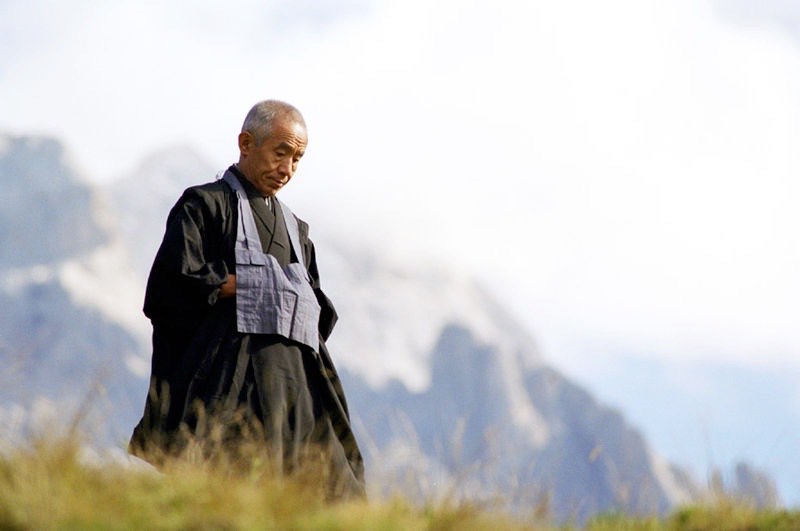
The more you sense the rareness and value of your own life, the more you realize that how you use it, how you manifest it, is all your responsibility. We face such a big task, so naturally we sit down for a while.
~Kobun Chino Otogawa
In 1967 a ship arrived in San Francisco. Aboard was a Zen Priest, carrying with him a large bronze bell and a wooden mukugio sent as gifts to honor the establishment of the first Zen monastery in America. The instruments would later burn in a fire at Tassajara Monastery and the young, shy priest would never return to live in Japan.
His birth had been a fortunate one. The Otogawas were a respected family of priests and in 1938, Kobun was born in the family temple at Kamo, a small town in the Nigata province located in Northwestern Japan. He was the youngest of six children in a prosperous and stable country. Quickly, circumstances changed. World War II began and lasted the bulk of Kobuns early childhood. Kobuns father died when he was eight, leaving behind a family foraging for food in a devastated Japan. Sometimes the family ate pumpkins, sometimes they ate pumpkin stems.
Even at an early age, Kobun was a skilled and intuitive calligrapher and a bright student. He found a mentor in Hozan Koei Chino Roshi and began serious Zen training, ordaining at the age of twelve. At fourteen he was adopted by Chino, who had no heirs, and began the training to prepare him to inherit the abbacy at Kotaiji. Together, the two walked from household to household performing ceremonies.
By high school, the draw toward a simpler practice led Kobun to sit with Kodo Sawaki, who was advocating a revitalization of zazen practice and a turning away from ceremonies and chanting. Kodo would have a powerful influence on Kobun and an irony began to develop: Throughout his life as a priest, Kobun would stand out for his exquisite ability to perform ceremonies and he would be well remembered for his predisposition not to do them.
Wandering the divide between these two antithetical teachers, Kobun mirrored the teachings of each with an embodied sense of place wherever he was. With Chino, he ministered to his people, performing flawless ceremonies, guiding them through the rites of passage in their lives. At Antaiji, he wholeheartedly rejected any adornment to the simple practice of seated meditation and sat in stoic silence with Kodo. To Kobun, both his teachers were exactly right.
Next page
